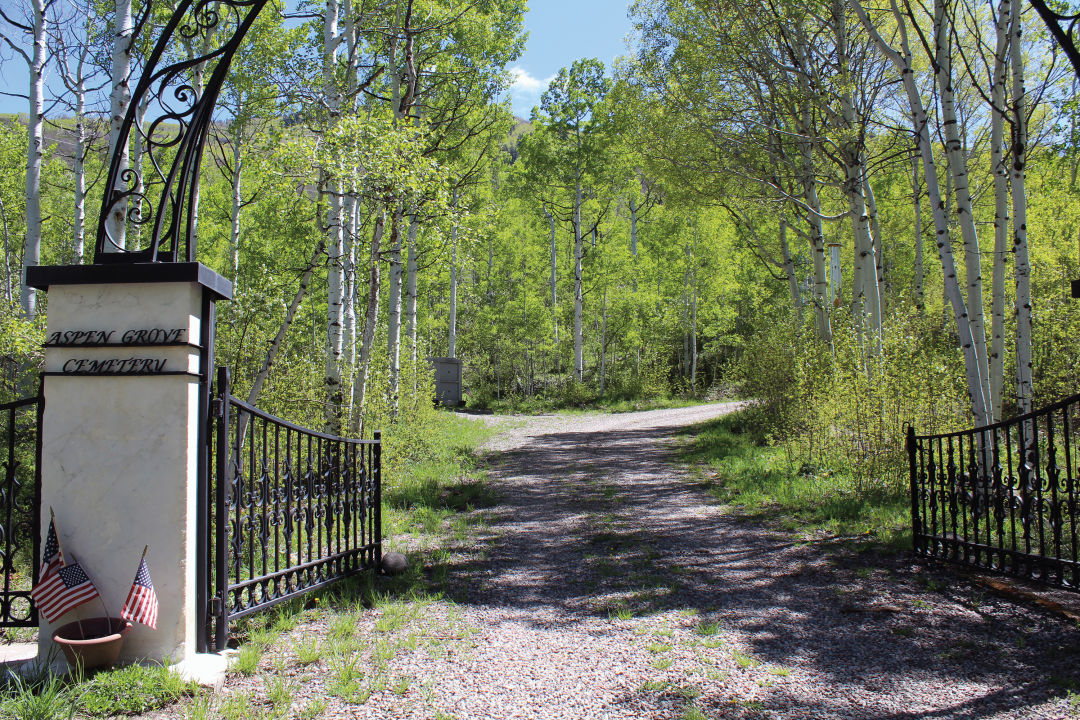Soul Food

Image: Nancy Mayer
Sure, it may seem a bit unusual, but one of my favorite local walks during the summer is through the Aspen Grove Cemetery, tucked on a hillside within a residential neighborhood east of town. I stumbled upon the place shortly after moving here in 1998, while walking Clover, my golden retriever, from our small apartment—attached to a big new house—a couple of blocks away.
We returned often. As Clover and I ambled along the walkways between graves, the engravings etched on markers (from simple weathered wooden footboards to mossy headstones and elaborately carved granite and marble monuments) told a tale of Aspen’s mining boom and its later rebirth as a ski resort.
Those who were laid to rest during the cemetery’s first decade, the 1890s—Aspen’s early, hardscrabble years—included many young men, probably miners, who likely perished in accidents or succumbed to other injuries. And so many children, infants, and toddlers whose lives were cut short by scarlet fever, diphtheria, and other illnesses difficult to treat in a remote mountain town.
Among all those unknowns I was surprised, at first, to come upon gravestones etched with iconic names, those associated with transforming Aspen into a ski destination and cultural center in the mid-1900s: Chicago industrial magnate Walter Paepcke and his wife, Elizabeth, who urged her husband to visit the town in 1945; Bauhaus-trained artist Herbert Bayer and family; architect Fritz Benedict and his wife, Fabi; Aspen Mountain ski area cofounder Friedl Pfeifer; photographer Ferenc Berko and his wife, Mirte. I suppose I expected to find these luminaries at either Red Butte or Ute, the town’s more prominent and better-known cemeteries. But I soon realized that this secluded spot, with Aspen Mountain standing sentinel to the south, offered a quite perfect tribute.
After I moved downvalley, to my own home in Basalt, I found solitude in other places. But recently, I returned to cherish Aspen Grove anew, relishing the calm of walking alone (Clover crossed the rainbow bridge years ago) in this outdoor cathedral, where the music is birdsong, the rustle of leaves, the jingle of wind chimes hanging from branches ... and, inescapably, the hammer and nails of nearby construction, the soundtrack of new Aspen.
Since I last visited, the big house with my small apartment had been torn down and replaced by an even newer, grander one. More graves had been dug among the aspens. And the town around the property has changed in many ways, not all of them easy to embrace. Near the cemetery’s entrance, a granite-topped bench was added, bearing an inscription: “Let us remember how good it once was.”
It was heartening to be reminded that, in many respects, it still is.
Hike into the Past
Take your own cemetery stroll with the Aspen Historical Society, which offers weekly guided walking tours of Red Butte Cemetery; the hourlong sessions ($12–$14) take place Fridays at 1:30 p.m. from June 17 through September 30. On August 30, longer twilight tours ($15) feature theater-style character reenactments of some of the cemetery’s permanent residents. aspenhistory.org













































